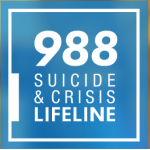Although some of the warning signs of the three most common mental disorders can overlap, there are distinctive clusters and patterns of symptoms that help health care professionals make a formal diagnosis of a specific mental illness.
The following descriptions of symptoms aren’t meant for people to make a self-diagnosis or to diagnose other people—that’s the job of a trained professional—but they can be used to help people determine whether what they are experiencing is a problem that requires help.
There is a manual called the Diagnostic and Statistical Manual of Mental Disorders, also known as the DSM. The most current edition was published in 1994 and is known as the DSM-IV. The fifth edition is currently being formulated and is scheduled to be published in 2012.
Mental health professionals use the DSM to help recognize patterns of symptoms that are common to specific mental illnesses. Some mental illnesses have quite distinctive patterns, while others are less straightforward. For a person to be diagnosed with any of the three most frequently diagnosed mental disorders, he or she must usually exhibit a number of the most common symptoms.
Click on the following to learn more about the most common symptoms of each mental disorder:
Last Reviewed: June 14, 2010








